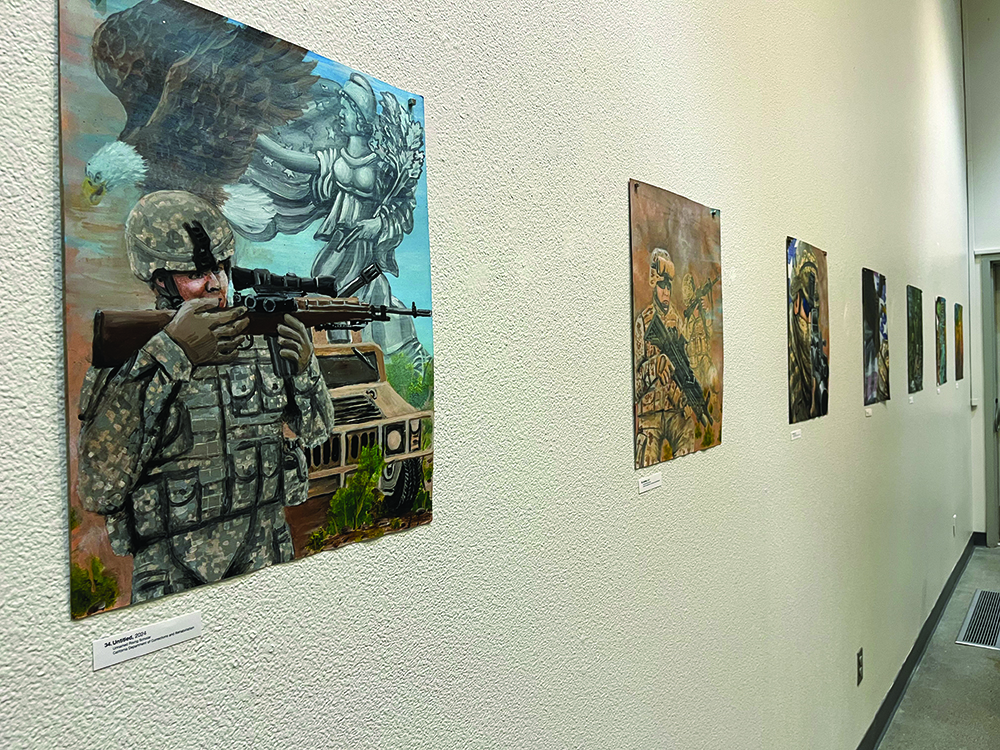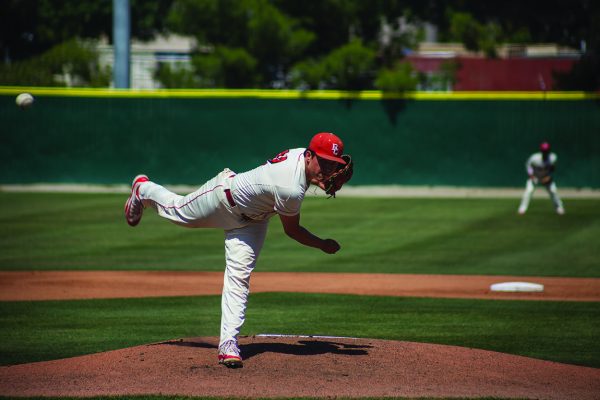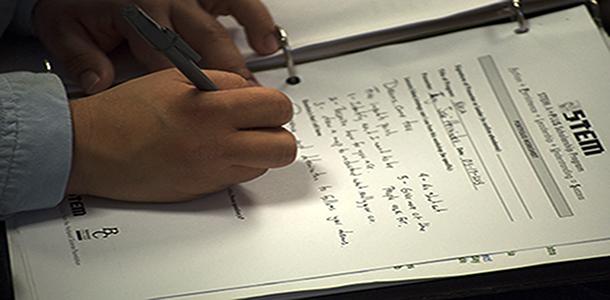By Mitchelle De Leon
Reporter
Former NASA astronaut Jose Hernandez captivated a packed audience as he shared his story at the Levan Center on March 19 as part of the STEM, or Science Technology Engineering and Mathematics, speaker series.
Growing up in a migrant farming family in the central valley, Hernandez overcame adversity to achieve his dreams. In fact, he was not proficient in English until the age of 12. In his presentation, he began by noting what he wanted to focus on.
“What I wanted to share with you is not so much the destination but the journey,” Hernandez said.
During a photo series that showed different parts of his life, Hernandez recalled different stories of his upbringing.
“I’m hoping that you see a lot of yourselves in those pictures,” he said. “It’s important to let you know this is where I came from.”
He recalled eagerly watching Apollo 17 land on the moon in 1972 when he was nine years old on a black and white television.
“I was just amazed and mesmerized,” he said.
He then came to the conclusion that he wanted to be an astronaut. When he first told his father about his ambition, he was nervous because his father was “very stern,” he said. His father then invited him to the kitchen, which further increased his anxiety.
“The kitchen was where I did my homework and where we got disciplined,” he recalled
However, his father then shared a message that surprised him.
“You know what, I think you can do it,” his father said to him, according to Hernandez.
His father gave him five steps to achieve his goal: First was identifying his goal; second was recognizing how far he was from his goal; third was drawing a roadmap with no shortcuts; fourth was getting an education and, finally, fifth was applying his work ethic from the fields to achieve his goal.
From his experiences, he believed that parents play a valuable role in any child’s success.
“[My parents] gave me the license to dream,” he said. “They become an advocate for you [if you share your dreams with them].”
With his father’s wisdom, he went on to pursue an undergraduate degree in engineering from the University of the Pacific and a master’s degree from the University of Santa Barbara. In his career, he achieved numerous honors and distinctions.
“I’m here to tell you that it works,” he said.
However, after NASA rejected his application to be an astronaut 11 times, he added one step to his father’s list.
“[The sixth step is] perseverance in a smart way,” he shared. “The best thing you can do is studying your competition…Navigate your way through, [thinking] ‘What can I do so I’ll have a higher probability of success next time.’”
He studied the qualifications of past astronauts. After taking flying lessons, getting an advanced scuba diving certification and even learning Russian, he finally joined the 19th class of astronauts in 2004.
In 2009, he fulfilled his lifelong dream when he boarded Space Shuttle Discovery as the flight engineer of mission STS-128.
He thrilled the audience when he described the experience alongside a video of the event. He recalled that the shuttle launched at midnight after three attempts.
“The vibrations are violent like the whole thing’s about to fall apart,” he said jokingly. “[I thought], ‘What did I get myself into?’”
As the flight engineer, he was one of the two main robotic arm operators. He described himself as the “taxi” of the astronauts on the space walk with his duties as flight engineer.
While traveling 17,500 miles an hour around Earth on the International Space Station, he experienced 45-minute intervals of daylight and nighttime. However, he said the size of the space station posed a unique challenge to astronauts.
“Losing equipment in the space station is like losing a needle in the haystack,” he recalled.
On the fourth day of the mission aboard space shuttle Discovery, NASA played a song called “Mi Tierra” by Gloria Estefan. Hernandez said that the song had a lot of significance to him.
“’Mi Tierra’ has a lot of meaning. [Estefan] wrote it with the emphasis of her homeland Cuba, but ‘mi tierra’ is also ‘my earth,’ so my interpretation was more global, and the fact that she was Latina was important to represent our Latino culture in space,” he said.
In fact, Hernandez’s mission marked the first time that two Hispanic Americans were on the same crew. He stressed the importance of diversity in space shuttle missions.
“Any time that we have efforts such as space travel, it should represent what America is, so the more diversity you have, the more different perspectives you can get in to a problem with respect to solving them.”
During the mission, he shared his experiences through his twitter account. He was the first NASA astronaut to have a bilingual twitter account. For every English tweet, he wrote a Spanish translation. On Aug. 29, 2009, he shared his first tweet in space.
“Settling in and realizing my dream…Micro G is great. Finished setting up the computers and ready for bed! Don’t need pillow!” he wrote on his twitter account @Astro_Jose29.
On the same day of his presentation at BC, he also shared his story to students participating in the 25th annual Kern County Science Fair. He believed that sharing his story to students was important.
“If I was able to do it in spite of the humble beginnings I came from, you should be able to do it as well, so it’s a process of empowering [students] and making them believe that anything’s possible if you set your mind into it.
“A lot of people are losing hope that the American dream is attainable, but if people like myself tell their story and tell them look, if you follow this simple five step recipe that I shared that my parents gave me, you too can reach the American dream. You just have to be willing to work hard for it.”
Yasmin Gallegos, chemical engineering major, was one of the BC students at the Levan Center. For her, the event was inspirational.
“It was amazing because I aspire to be an astronaut much like him where he didn’t really decide until later like high school,” she added.
Hernandez currently works as a consultant for the aerospace industry. In 2011, he unsuccessfully ran for a seat in Congress. He said he hasn’t closed the door to a future in politics.
“I’m contemplating whether to run again,” he said.
Past speakers for the STEM speaker series include Reed Timmer from “Storm Chasers” and Deanne Bell from “Smash Lab.” Both shows aired on the Discovery Channel.
STEM Director Rageshwar Goldberg shared BC’s philosophy in choosing STEM speakers like Hernandez.
“For the STEM speaker series, we try to find a speaker that can open people’s eyes beyond the stereotypes within STEM, beyond Einstein in a white lab coat kind of picture, to show [how to achieve] a STEM career, [how to enter] into a profession, what inspiration goes into it [and] what work goes into it,” Goldberg said.
The STEM Colloquia, which are separate from the speaker series, will feature a professor from Fresno State University will discuss how cow pat and rat pee impact air pollution on April 9.





